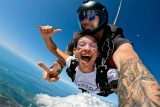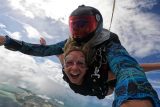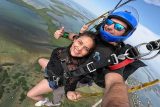Skydiving In The Summer Heat
Skydiving
Posted by: Skydive Key West
2 years ago
Summertime is the most popular skydiving season across the US. With freed up summer-break schedules, everybody is just fiending for a top-notch adventure to add to their summer bucket list!
Most skydivers appreciate when it’s not-so-terribly hot on the ground but with just enough heat to make it not be bitterly cold up at altitude (remember Goldilocks?). Inland, somewhere between high 70’s to low 80’s is just right. At Skydive Key West, we typically see temperatures in the 80 to 90 degree range, kissed with a sweet sea breeze. Perfection!
However, the summer season doesn’t always have the best weather for skydiving – temperatures can get pretty extreme and, truth talk, miserable. And if you’re planning on taking on a tandem skydive this summer, we’re here to help you beat the heat! We’ve got the facts on how the summer heat may impact your jump and five fantastic tips on how to stay extra cool if you’re skydiving when it’s hot.
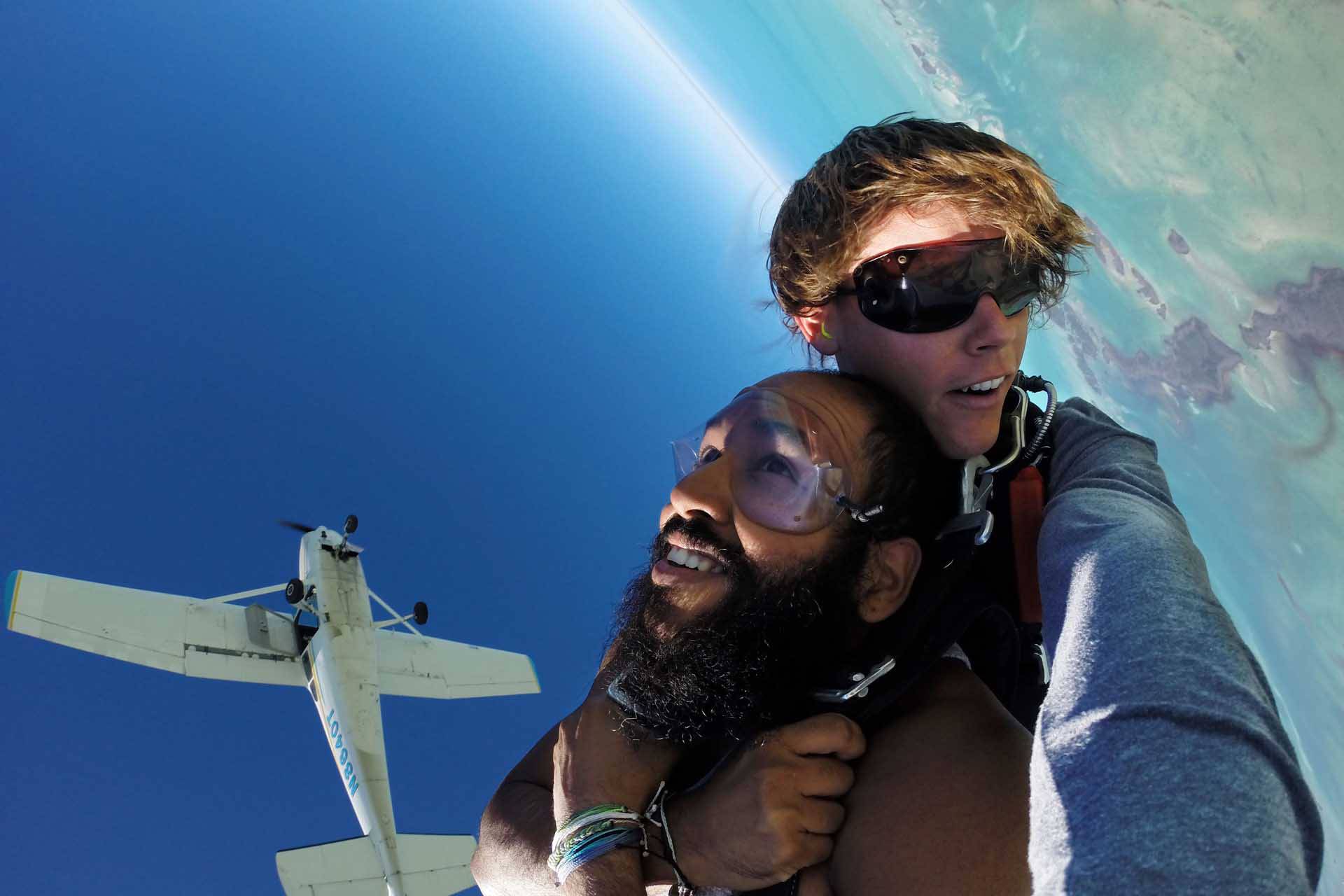
How to Prepare for Skydiving in the Summer
If we can share some knowledge to help improve your first-time skydiving experience, we are all about it! We’ve got five helpful tips to get you prepped for skydiving in the summer heat.
- Schedule your jump for the morning, if possible.
We think any time of the day is awesome for skydiving – but if you’re being heat conscious, we recommend booking your skydive in the morning hours when it’s not so hot. Plus, what better way to start your day? At Skydive Key West, we open as early as 8:00 am – you’ll be rocking that skydiving afterglow all day!
- Wear comfortable clothing.
When choosing what to wear for your skydive, it’s important to pick something that is easy to move in. A good rule of thumb is to dress like you’re going for a light jog. Keep in mind that it’s 20 to 30 degrees cooler up at altitude, so if you want to wear a tank top we recommend bringing an extra layer to wear when it’s time to jump! As always, closed-toed shoes are an absolute must. *Skydive Key West has shoes available to borrow if necessary (#islandlife).
- Apply sunscreen to protect your skin from those harsh UV rays.
- Hydrate, hydrate, hydrate!
Drink lots of water before your skydive to keep your body hydrated and ready for the adrenaline rush. Don’t forget to eat a little something beforehand as well to give yourself the energy you’ll need!
- Take advantage of the amenities.
The whole skydiving experience from check-in to landing can last anywhere from one to two hours with the majority of that time waiting on the ground. Luckily, Skydive Key West offers a comfortable, air-conditioned lounge to chill at while you anticipate the next step. After you land, we provide a two-minute golf cart ride back to the refreshingly cool office where you can watch and download your video right then!
Another factor worth mentioning: thunderstorms. The heat can also bring storms into the Florida Keys – but, they don’t usually stick around for long at Skydive Key West. Be prepared to practice patience. We will usually wait about 20 or 30 minutes for the storm to pass before we continue jumping.
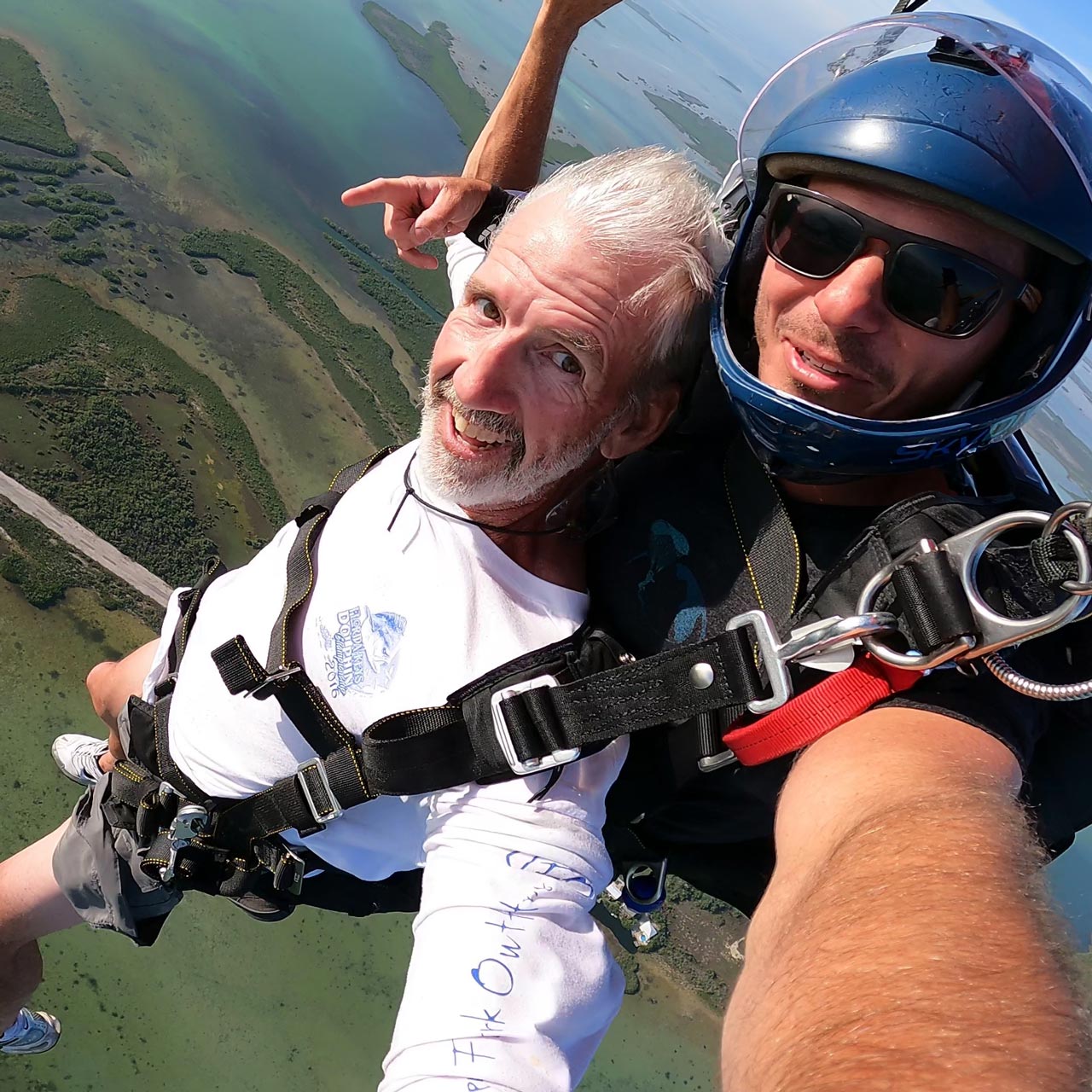
How Does Heat Impact Your Skydive?
If you’re into science – this one’s for you!
Not only does the summer heat affect your physical body’s comfort, it can have some effects on the actual skydive itself! The heat can create turbulent thermals, which are localized, vertical air movements that develop when the ground is much hotter than the air above it. These can cause a bumpy landing and it can change the density (thickness) of the air.
Sometimes the effects of the heat may become so serious that some dropzones will shut down or choose to operate only during the morning hours, when the air is a bit cooler. The reason for this is because higher temperatures create less density in the air, which can influence the aircraft. The lower the air density, the faster an airplane must travel to produce enough lift in order to take off – which means they need more runway to reach a higher speed. Yes, sometimes airplanes can simply run out of room on the runway! Fortunately, we can predict this problem before it occurs and take precautions as necessary to keep everyone safe, and it’s a pretty rare occurrence. It’s usually only a concern when temperatures reach above 100 degrees.
Ready to turn up the heat on your vacay?! Book your summer skydive at America’s most scenic dropzone – Skydive Key West! Blue skies.
